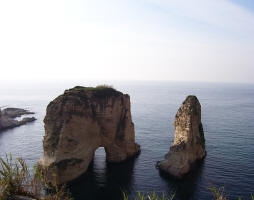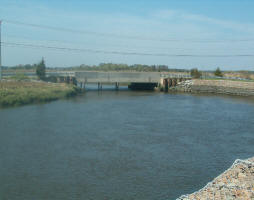 Death of the Nile: The world's longest river is sick - and getting sicker
Death of the Nile: The world's longest river is sick - and getting sicker
Booming populations have dirtied and drained it, while climate change threatens to cut its flow. And some fear that competition over its dwindling waters could trigger a regional conflict.
The rains
The rot starts at the source. For as long as the Nile has flowed, Ethiopia’s rains have made up the great bulk – over 80% – of its waters. Fat droplets pour down from July to September, not stopping until the roads have been churned into impassable bogs. Small inland seas emerge almost overnight, slicing the Amhara Plateau into a maze of soggy islets. Gushing out of a forest just south of Lake Tana, the Blue Nile greedily soaks up this bounty, quickly swelling from a stream to a torrent.
Though slightly longer, the White Nile, which originates in East Africa's Lake Victoria and merges with the Ethiopian branch at Khartoum, carries a fraction of the volume. But these rains are not falling as they used to. And that is potentially catastrophic for the entire basin. The Meher, the long summer wet season, is arriving late, and the shorter rains earlier in the year sometimes not at all. “It’s so inconsistent now. Sometimes stronger, sometimes lighter, but always different,” said Lakemariam Yohannes Worku, a lecturer and climate researcher at Arba Minch University
Dam conflict
The further the Nile goes, the more sordid its problems become. Thirty miles after leaving Lake Tana, the river plunges over the majestic Blue Nile falls, and then enters a long web of deep cliff-lined gorges. Gathering strength with each arriving tributary, it cascades down 1,500 metres from the highlands to the semi-arid plains below. It is the most beautiful, most isolated and, perhaps, the most troubled portion of the entire basin. That is because Ethiopia’s sparsely-populated wild west is mired in squabbles both local and international. From the controversial construction of Africa’s largest dam in the rugged hinterland just shy of the Sudanese border, to Addis Ababa’s alleged displacement of tens of thousands of villagers in order to lease their prime Nile-side land to foreign agribusinesses, an uneasy pall hangs over the entire area. Just reporting there means navigating a complicated minefield of checkpoints, informants, and terrified interviewees. “You have to understand there are things we cannot talk about,” said Samuel, a restaurant chef in Injibera, blanching noticeably when asked about nearby land grabs. “These are the questions that get you into trouble.”
Read the long-form article by Peter Schwartzstein via BBC Africa.
| Contact information | n/a |
|---|---|
| News type | Inbrief |
| File link |
http://www.bbc.co.uk/news/resources/idt-sh/death_of_the_nile |
| Source of information | bbc |
| Subject(s) | AGRICULTURE , DRINKING WATER , HYDRAULICS - HYDROLOGY , INFRASTRUCTURES , POLICY-WATER POLICY AND WATER MANAGEMENT , PREVENTION AND NUISANCES POLLUTION , RISKS AND CLIMATOLOGY , WATER DEMAND |
| Geographical coverage | Egypt, |
| News date | 02/11/2017 |
| Working language(s) | ENGLISH |
 you are not logged in
you are not logged in





